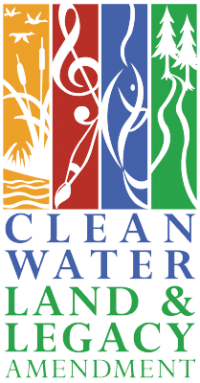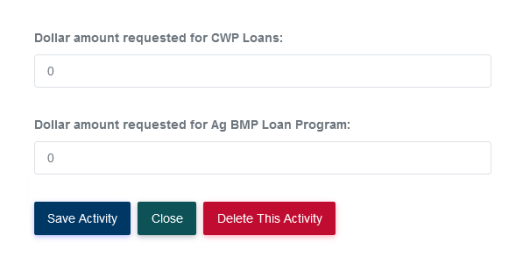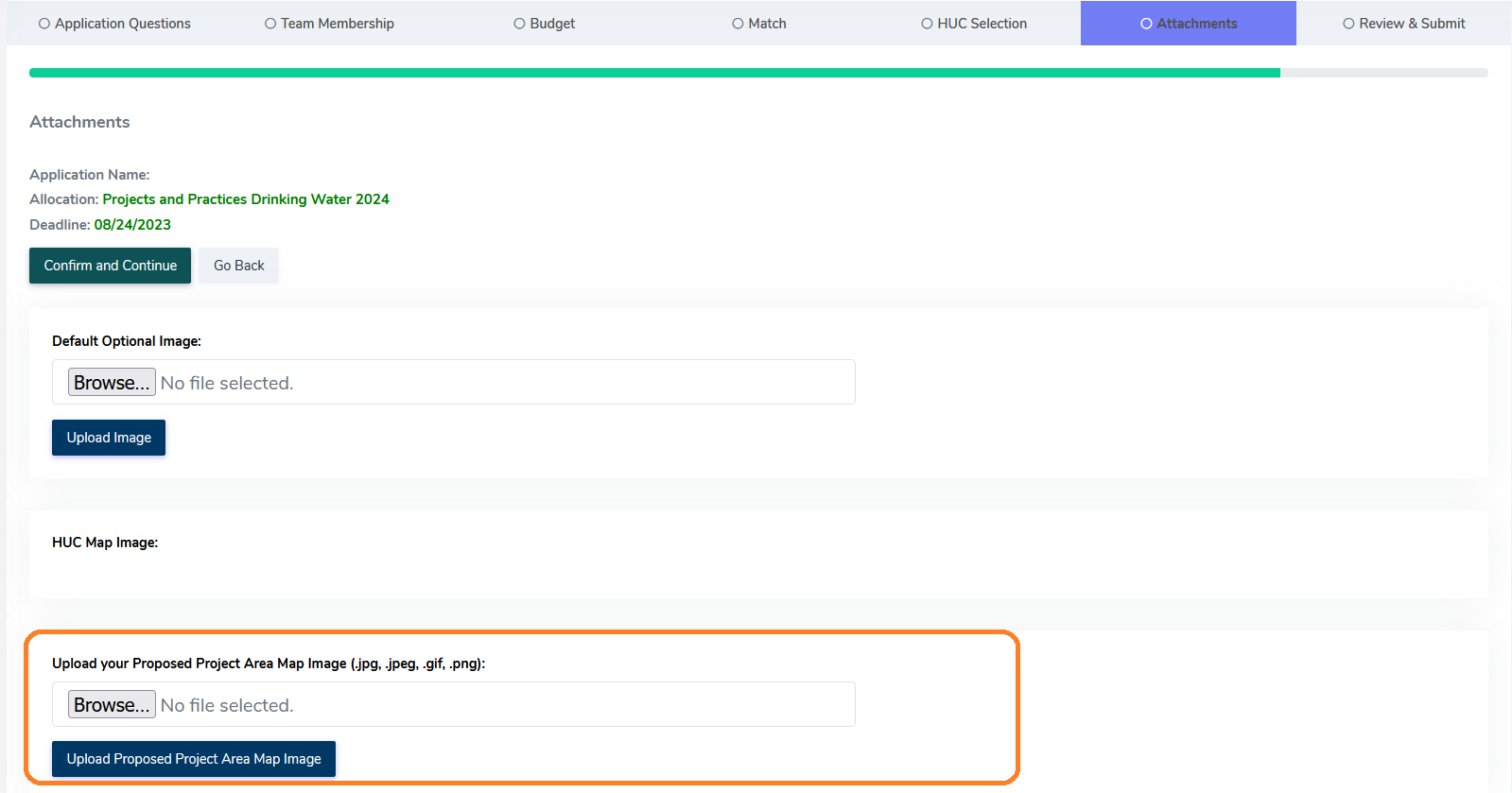Contents:
- General Requirements, Policy, and Eligibility
- Projects and Practices Grants
- Projects and Practices Drinking Water Sub-grant Program
- Accelerated Implementation Program
- eLINK
Submit additional questions to: cwfquestions@state.mn.us
General Requirements, Policy, and Eligibility
Q: The RFP states that prevailing wages apply. What are the grant applicant’s responsibilities for compliance?
A: Prevailing wage requirements apply to all state funds used for “projects” that meet the definition identified in M.S 177.42 Subd. 2. As the RFP states, your first source of information for questions about the application of prevailing wage rates should be directed to the Department of Labor and Industry at 651-284-5070, or https://www.dli.mn.gov/business/employment-practices/prevailing-wage-information . However, the following information may help you better understand these requirements.
The responsibilities of a grant recipient are to: (1) be aware of prevailing wage and ensure their project’s cost proposals address this requirement; (2) include prevailing wage information in their bid and contract documents; and (3) receive and maintain the payroll reports that contractors will furnish every two weeks. Prevailing wage does not apply to administrative activities of the grant recipient or construction activities directly conducted by a local government, i.e. if an SWCD uses its own staff to plant trees, prevailing wage would not apply, but if they contracted with Joe’s Planting Service it would. For additional information refer to the BWSR website: http://bwsr.state.mn.us/prevailing-wage
Q: What can be used for in-kind cash value as match?
A: Match includes the services, materials, or cash contributed to the accomplishment of grant objectives. In-kind cash value must be directly attributed to the project or activity accomplishments and account for the same as items charged directly to the grant. Activities listed as ineligible under Section 4 (Ineligible Activities) of the policy may not be counted towards match. Use the following guidance when considering in-kind cash value:
Local staff and administrative costs in excess of the reporting and grant management, project development, or technical and engineering component of the grant funds received.
Conservation practice costs may not be increased beyond the actual costs of technical assistance, design, materials, and installation by the application of match. In no case may conservation practice costs exceed 100% of the actual cost of design, materials, and installation. Land value match may only be used to match structural or installed conservation practices and may only be applied where changes from current land use or land cover are implemented such that water resource protection becomes the new primary objective for the land under consideration.
Q: Can loan or grant funds from other state programs be used as match?
A: Loan funds from the Minnesota Pollution Control Agency’s (MPCA) Clean Water Partnership (CWP) Program, the Minnesota Department of Agriculture’s AgBMP Program and Public Facilities Authority’s water programs may be used as match. Any state grant funds may not be used as match.
Q: Where can I find more information about requirements and permitting?
A: Below are some examples of resources you can use to learn more about requirements and permitting for specific types of projects.
Environmental Review requirements:
- Environmental Quality Board: Guidance for Practitioners and Proposers
https://www.eqb.state.mn.us/environmental-review/guidance-practitioners-and-proposers - Environmental Assessment Worksheet Process
https://www.eqb.state.mn.us/environmental-review/overview/environmental-assessment-worksheet-eaw-process - Mandatory Environmental Assessment Worksheet (EAW) Categories
https://www.revisor.mn.gov/rules/4410.4300/
MPCA storm water permitting requirements:
- Construction stormwater permit overview
Construction stormwater | Minnesota Pollution Control Agency (state.mn.us)
- Common Plan of Development
Common plan of development (state.mn.us)
- Untreated Stormwater Runoff to Lakes, Streams, and Wetlands
Untreated stormwater runoff to lakes, streams, and wetlands (state.mn.us)
DNR public waters requirements:
A DNR Public Waters Work Permit[1] is required to:
- construct, reconstruct, remove, abandon, transfer ownership of, or make any change in a reservoir, dam, or waterway obstruction on public waters; or
- change or diminish the course, current, or cross section of public waters, entirely or partially within the state, by any means, including filling, excavating, or placing of materials in or on the beds of public waters.
For additional information about specific permits see Do I Need a Permit? on the Minnesota DNR’s website.
For information about the Public Waters Work Permit process, please go to:
https://www.dnr.state.mn.us/waters/watermgmt_section/pwpermits/requirements.html
Q: What is BWSR’s expectations for grants related to street sweeping?
A: BWSR funds should be used for targeted street sweeping that can provide more effective pollutant removal compared to basic street sweeping. There have been recent advances in mapping and pollutant reduction estimate methodologies by Minnesota researchers and practitioners that help local governments create “enhanced street sweeping plans”. These plans identify critical urban areas (e.g. roads, parking lots, etc.) for street sweeping, the best times of year, sweeping frequency, and potentially the type of equipment that will most effectively capture pollutants for priority water resources. If grantees are requesting to purchase a street sweeper, as with any capital equipment purchased with Clean Water Funds, applicants should detail the future use that will maximize pollutant reductions. Please refer to the MN Stormwater Manual and the University of MN Water Resources Center for more information.
Q: Are Subsurface Sewage Treatment Systems with a design-flow over 10,000 gallons per day (and thus requiring a State Disposal System permit) eligible?
A: No, these large SSTS that require an SDS permit are not eligible.
Projects and Practices Grants
Q: Are MINNFARM pollution estimates based on the pollution problem at the existing feedlot today or the reduction of pollution after the fix has been implemented?
A: For the purposes of the grant application, the pollution reduction achieved from implementing the fix (which is the difference between the pollution estimates pre and post project) must be entered into eLINK. If the project design or construction changes occur during the grant period, the new pollution reduction estimate must be reported in eLINK under Activity Details as actual results.
Q: Does BWSR have any preferences for feasibility studies that are submitted for in-lake management practices?
A: Yes, BWSR prefers that feasibility studies that are assembled from multiple studies/reports include a Table of Contents that clearly indicates on what page numbers required information can be found.
Q: I am applying for funding for a pit closure. Do I need to fill out the required supplemental questions for Feedlot applications?
A: It depends. Applicants do not have to complete the supplemental worksheet for facilities that are no longer actively registered, don’t have livestock, or facilities to house livestock. However, an applicant with an active feedlot registration would need to fill out the form.
Q: Does the feedlot operator need to update their feedlot registration at the time of submitting the grant application?
A: The Minnesota Pollution Control Agency (MPCA) or delegated counties determine feedlot registration requirements and timing. However BWSR uses the feedlot registration information in MPCA's database at the time of grant application submittal to determine compliance with CWF policy.
Q: Must the financial assurance for stream bank stabilization and stream restoration projects be liquid cash, such as an escrow held throughout the life of the project?
A: No, but at a minimum, documentation must be provided that identifies expectations and commitment from all engaged parties. Section 3.2 and Section 3.3 of the FY2023 Clean Water Fund Completive Grant policy specifically details requirements for project assurances and operation and maintenance.
BWSR recognizes that stream restoration and stabilization projects are an important management tool for local governments to meet their clean water goals. However, because rivers are by their very nature always changing, it is crucial that stream restoration projects take this risk into account. Effective stream restoration will involve maintenance and may involve adaptive management when the river system does not respond as expected or when unexpected events interfere with restoration success.
Given the importance of maintenance and adaptive management to the success of a stream restoration or streambank stabilization project, it is important for BWSR to realistically appraise whether adequate assurances are in place to ensure a project’s long-term goals are met.
Projects and Practices Drinking Water Sub-grant Program
Q: Are grade stabilizations in watercourses that contribute large amounts of sediment upstream of a public surface water supply eligible projects under the Projects and Practice Drinking Water sub-grant Program?
A: No. In channel grade stabilization projects technically are not land treatment projects and would fall under “streambank stabilization and stream restoration” which would not be eligible for the Drinking Water sub-grant program.
Q: Why is a map of the project area required for this program?
A: A map detailing various GIS layers is required to show why the area is targeted for drinking water protection. Data layers to consider are:
- Pollution sensitivity of near surface materials with expanded key (ex. High – coarse grain material)
- DWSMAs with vulnerability ratings with expanded key (ex. High – coarse grain material)
- Aquifer use by section
- Township testing results
- MDA Groundwater Protection Rule Level 1 and 2 DWSMAs
- Source Water Protection, Priority Area A & B.
Q: Do we need ArcGIS to create the required project map?
A: No. Most data layers are available in map form using the DNR WHAF tool.: (https://www.dnr.state.mn.us/whaf/index.html). Instructions for use along with additional information can be found at https://bwsr.state.mn.us/groundwater-protection
Accelerated Implementation Grants
Q: Are costs to hydrocondition DEMs eligible under AIG?
A: Yes, however any proposals to hydrocondition or to update hydroconditioning must be applied to LiDAR created after 2019.
3D Geomatics 3DEP Compliant Lidar Status (arcgis.com)
Any proposals for this work should clearly indicate what other funding sources that LGUs/partnerships have secured as match, including counties and cities, Riparian Protection Aid and federal infrastructure (IRA) funding.
eLINK
Q: I'm getting an error when trying to validate my application. (added 7/21/23)
A: Within the Add/Edit Proposed Activity screen for each activity, be sure to enter a value in response to the questions "Dollar amount request for CWP Loans" and "Dollar amount requested for AgBMP Loans." This can be "0", but cannot be left blank.
Q: Can multiple photos be submitted for an application?
A: Only one application image file in one of the allowable formats may be submitted per application (jpeg, gif, tiff, bmp, png; file extension should be lower case). The application image file will be automatically scaled to fit on one page of the final application document. The composition of the application image is up to the applicant. Images are added through the “Upload Application Image” button on the Grant Request page. Images uploaded as General Attachments will not be seen by reviewers.
Q: What are the character limits for application questions?
A: Most of the questions within the application have a 2,000-character limit (approximately 300 words), including spaces. If you choose to develop your responses outside of eLINK, e.g. in Word, be aware that programs may count the characters differently due to differences in how the characters are encoded.
Q: The character limit for answering most application questions in eLINK is 2,000 characters. Does that include spaces?
A: Yes. A space is considered a character in eLINK.
Q: Can I make changes to a submitted application during the RFP open period?
A: Yes. You will need to change the submitted status to “in process”, make changes, and change the status back to “Submit”. The status change triggers generating the report, which is added to the Attachments tab and seen by reviewers. Please note that failure to change the status back to “Submitted” will not capture any changes for review team, and applications not in “Submitted” status at the time the RFP closes will not be considered for funding.
Q: Can I access my earlier grant applications even if they were not funded?
A: Yes, you can access them by logging into eLINK and navigating to "Request Funds" in the left menu, then clicking on "Funding Requests". You will need to check the “Include closed request” box to search for your previous application.
Q: Can consultants submit grant applications in eLINK on behalf of LGUs?
A: Yes, there are two ways to accomplish this. One way is for the LGU to start an application and add a consultant to the “team membership”. The consultant must have an active eLINK user account to be added to the team membership. The second way is for a consultant to request an eLINK user account from the eLINK homepage and indicate the LGU(s) for which they are applying. The LGUs should be aware of this request.
eLINK user accounts should not be shared by multiple individuals; a separate user account should be requested by each individual needing access. It is not necessary to create multiple eLINK user accounts for one individual if access is needed for multiple organizations. To request access to additional LGUs contact elinksupport@state.mn.us
Q: I have entered proposed indicators within the Application Activities. Why do I also need to provide a narrative summary of “proposed Measurable Outcomes”?
A: This is a required field for all applications, and allows for a high-level comparison between what was proposed during the funding request and the final outcomes reported at grant closeout.
Q: When attempting to submit my application, I get a message stating, “For each activity, you must either check the box verifying that there are no pollution reduction estimates associated with the Activity or enter proposed indicators.” What do I need to do?
A: Within the Application Budget tab, you will either need to ensure that the “Check here if this activity does not include proposed pollution reduction estimates” is checked within the Edit Application Activity” screen (pencil icon), or enter proposed indicators within the “Edit Indicators” screen (orange diamond icon). If your project will include on the ground practices resulting in pollution reductions, indicators must be entered.
Q: When is an additional Attachment allowed?
A: Items should only be uploaded under the Attachments tab when specifically required, as per the RFP. For FY24, the following programs and/or project types require the specified attachments:
- Projects & Practices: In-Lake Treatment Feasibility Study
- Projects & Practices: Feedlot Supplemental Worksheet
- Projects & Practices Drinking Water: Project Location Map
Q: Where should I upload my Project Location Map?
A: Upload the Project Location Map on the Attachments page, under the prompt, "Upload your Proposed Project Area Map Image":



